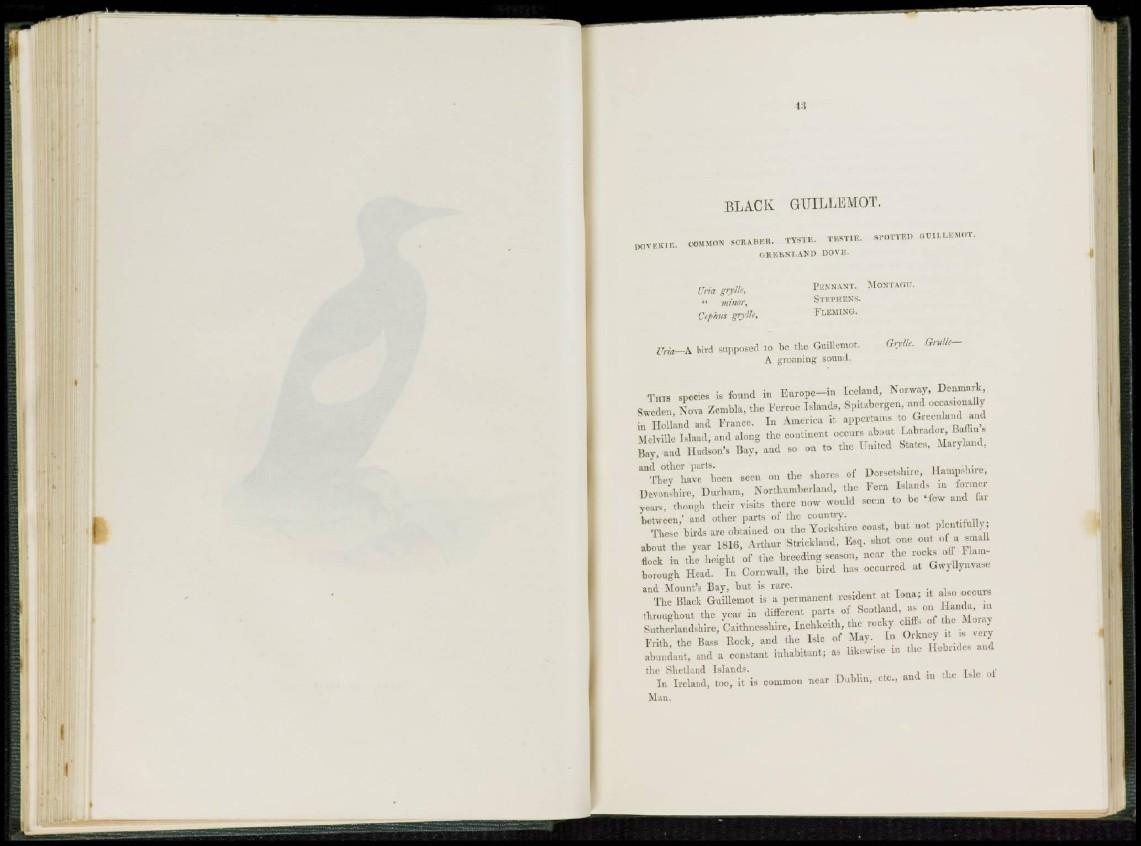
BLACK GUILLEMOT.
DOVBK1E. COMMON SCRAHEK. TVSTE. TERT1E. s , ™ OC.U.EMOT.
GREENLAND DOVE.
Crin gtyBe, Pennant. M o n t A t a r j .
" minor, Stephens.
Cphm grylk, Fleming.
Urie-k bird supposed to ho the Guillemot. Grylh: Grulh-
A groaning sound.
T H I S species is found in Europe—in Iceland, Norway, Denmark,
Sweden, Nova Zcmbla, t h e F e r r o e Islands, Spitsbergen, and occasionally
in Holland and France. In America i: appertains to Greenland and
Melville Island, and along the continent occurs about Labrador, Baffin's
Bav, and Hudson's Bay, a nd so on to the United States, Maryland,
and other parts.
They have been seen on the shore-, of l)or>etshire, Hampshire,
Devonshire, Durham, Northumberland, the Fern Islands in former
years, though THEIR visits there now would seem to b e ' f ew a n d far
between,' and other parts of the country.
These birds are obtained on the Yorkshire coast, but not plentifully;
about the year 1 8 1 6 , Arthur Strickland. Esq. shot one out of a small
flock in the height of the breeding season, near the rocks off Flaiubmough
Head. In Cornwall, the bird has occurred at Gwyllyuvase
and Mount's Bay, b u t is rare.
The Black Guillemot is a permanent resident at I o n a ; it also occurs
throughout the year in different parts of Scotland, as on Handa, in
Sutlierlimdsliire, Caithnesshire, Inchkeith, the rocky cliffs of the Moray
Frith, the Bass Rock, and the Isle of May. In Orkney it is very
abundant, and a constant inhabitant; as likewise in the Hebrides and
the Shetland Islands.
I n Ireland, too, it is common near Dublin, etc.. and in the I s l e of
MAN.